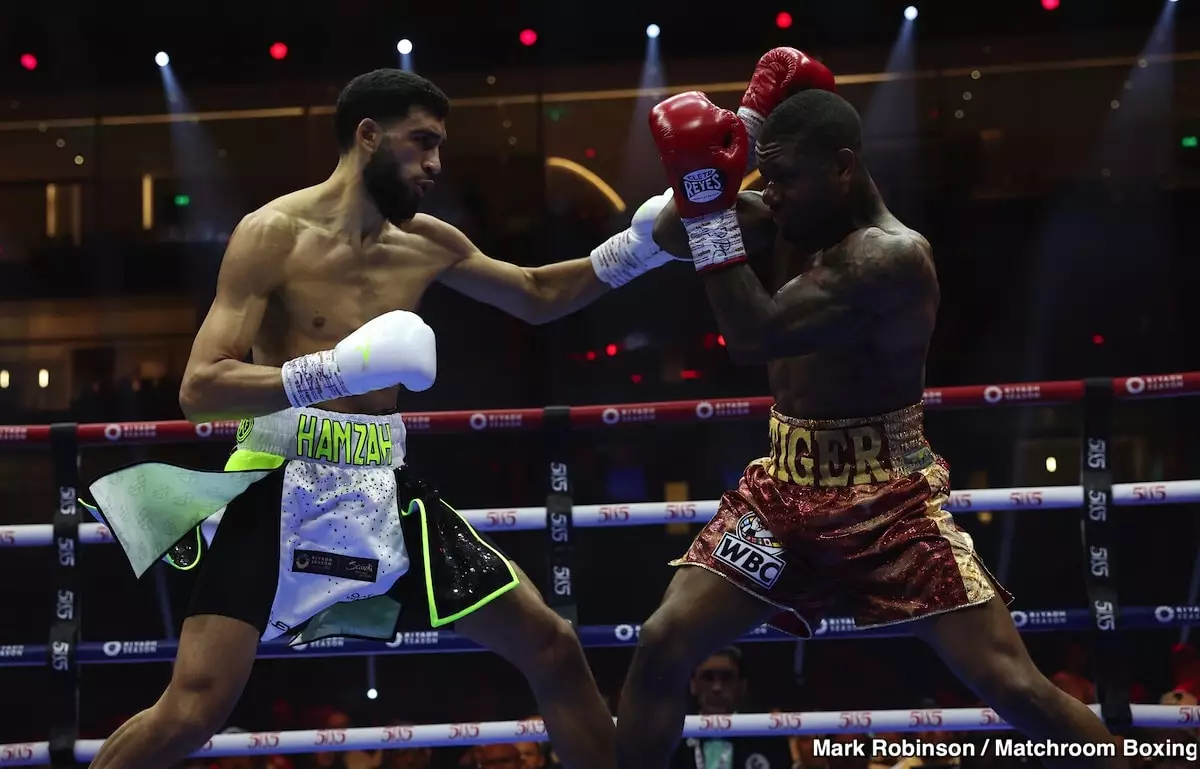In the world of professional boxing, strategic decision-making is pivotal not just for winning fights but for managing a fighter’s career trajectory. Hamzah Sheeraz, an undefeated prospect in the middleweight division, recently faced criticism after electing to challenge WBC champion Carlos Adames, as opposed to taking on IBF and WBO titleholder Janibek Alimkhanuly. Critics have accused Sheeraz of avoiding Alimkhanuly, who is perceived as the most formidable opponent in the weight class. However, the complexities of boxing negotiations and mandatory obligations can provide a different perspective on his choices.
Sheeraz’s record stands at 21 wins with 17 knockouts, showcasing his punching power and the potential he holds. Despite the strong performance against Austin ‘Ammo’ Williams, where he secured a knockout victory and solidified his status as a WBC mandatory challenger, doubts linger regarding his capability to face tougher opponents. This skepticism primarily revolves around his reluctance to confront Alimkhanuly, a fighter who is not only undefeated but also possesses an impressive skill set.
Financial Realities Influencing Fight Decisions
One of the underlying factors in Sheeraz’s decision-making process appears to be financial viability. The boxing industry often highlights the business aspects that dictate matchups, and Sheeraz is not immune to these realities. He claimed that it made more sense to pursue the WBC title due to his longstanding mandatory status following his victory over Williams. His rationale suggests that logistical considerations, including available purse structures and potential revenue from the fight, heavily influenced his choice.
While boxing fans may yearn for matchups that align more directly with competitive merit, Sheeraz’s financial argument is rooted in pragmatism. By focusing his efforts on Adames rather than risking an encounter with a more established name like Alimkhanuly, he may be ensuring the financial stability and promotional success of his forthcoming bout. This highlights the dichotomy in boxing: where the desire for high-stakes matches often clashes with the economic motivations of fighters and their teams.
Critically, Sheeraz’s opt to challenge Adames also opens a window to discuss his perceived vulnerabilities in the ring. Notably, some pundits assert that his showing against Williams revealed chinks in his armor, leading to the notion that he is not as invincible as his undefeated record might suggest. The concern here is that by sidestepping tougher opponents like Alimkhanuly or WBA champion Erislandy Lara, Sheeraz may inadvertently reinforce the belief among fans that he is avoiding legitimate challenges, thereby risking his reputation as a serious contender.
Such perceptions can be dangerous in a sport where public opinion and media scrutiny can shape a fighter’s legacy. The potential stigma of being labeled a “hype job” could haunt Sheeraz moving forward, especially if he successfully takes the title from Adames—a fighter some consider the “weakest link.” Hence, Sheeraz’s upcoming bout could be pivotal not only in terms of championship standing but also in terms of solidifying his credibility within the sport.
Nevertheless, Sheeraz contends that he is not ducking anyone; instead, he emphasizes that all fight negotiations hinge on what makes sound business sense. His statements indicating that the decision process was more bureaucratic and less about avoiding danger reflects a broader truth in boxing: fighters must navigate the landscape carefully, weighing their ambitions against business realities.
Ultimately, the path that Sheeraz has chosen may well serve him both economically and strategically, provided he secures a decisive victory against Adames. Should he prevail, Sheeraz could advocate for a more challenging matchup against a fighter like Alimkhanuly, thereby quelling doubts and earning respect amongst critics. Conversely, should the fight diminish his standing, he may find himself boxed into a corner—questioning his own decisions and the path that lay ahead.
As the boxing landscape continues to evolve, the consequences of Sheeraz’s choices will undoubtedly resonate across the middleweight division. Whether these strategic maneuvers bolster his career or exacerbate the skepticism surrounding him remains to be seen, but one thing is certain: in professional boxing, every decision is fraught with implications.

